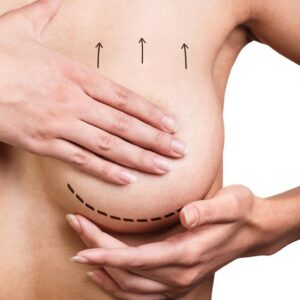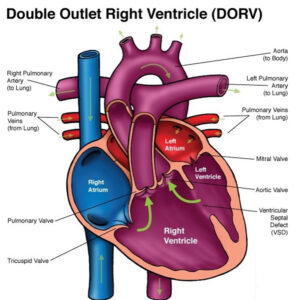Description
Familiarity with treatment
Sliding genioplasty is a surgical procedure used to realign and reshape the chin. It is a type of genioplasty, which is the alteration of the chin through either osseous manipulation or implant augmentation. Sliding genioplasty is typically performed for cosmetic reasons to improve the appearance of the chin and achieve better facial balance.
Here is an overview of the sliding genioplasty procedure based on the search results:
Incision: The procedure begins with the surgeon making an incision either inside the mouth along the lower gums or under the chin. The choice of incision location depends on various factors, including the surgeon’s preference and the specific needs of the patient.
Bone Cutting: Once the incision is made, the surgeon uses a saw to carefully cut part of the chin bone. The bone is cut in a horseshoe-shaped pattern, known as an osteotomy. The size and shape of the bone segment to be removed or repositioned depend on the desired outcome and the patient’s individual needs.
Bone Repositioning: After the bone segment is cut, the surgeon can then slide it forward, backward, or sideways to achieve the desired chin position and alignment. The bone is secured in its new position using small plates, screws, or wires.
Closure: Once the bone is repositioned, the incision is closed using sutures or surgical staples. If the incision was made inside the mouth, there are usually no visible external scars. If the incision was made under the chin, the resulting scar is typically well-hidden and fades over time.
Recovery: After the procedure, the patient will be monitored in a recovery area before being discharged. Pain medication may be prescribed to manage any discomfort. Swelling, bruising, and numbness are common after sliding genioplasty and gradually subside over time. It is important to follow the surgeon’s postoperative instructions for proper wound care, pain management, and activity restrictions.
Who is it suitable for?
Sliding genioplasty, a type of genioplasty, is suitable for individuals who wish to improve the appearance of their chin and achieve better facial balance. Here are some factors to consider based on the search results:
Cosmetic Concerns: Sliding genioplasty is primarily performed for cosmetic reasons. It is suitable for individuals who are dissatisfied with the shape, size, or projection of their chin and desire a more balanced facial profile.
Chin Deficiency: Sliding genioplasty is recommended for individuals with a chin deficiency, also known as retrogenia. This refers to a chin that is set too far back in relation to the rest of the facial features. Sliding genioplasty can help bring the chin forward to achieve better harmony with other facial structures.
Chin Asymmetry: Sliding genioplasty can also be beneficial for individuals with asymmetrical chins. By repositioning the chin bone, the procedure can help correct the asymmetry and create a more symmetrical appearance.
Chin Proportions: Sliding genioplasty is suitable for individuals with a chin that is too long or too short in relation to the rest of their facial features. The procedure can help lengthen or shorten the chin to achieve better facial proportions.
Bite Alignment: In some cases, sliding genioplasty may be recommended to help align the bite. It can be performed in conjunction with orthodontic treatment or other jaw surgeries to improve the overall function and aesthetics of the jaw and facial structures.
Who is it not suitable for?
Sliding genioplasty may not be suitable for everyone. Here are some factors to consider based on the search results:
Medical Conditions: Individuals with certain medical conditions or health concerns may not be suitable candidates for sliding genioplasty. It is important to discuss your medical history with your surgeon to determine if you have any conditions that may increase the risks associated with the procedure.
Unrealistic Expectations: It is important to have realistic expectations about the outcome of the procedure. Sliding genioplasty can improve the appearance of the chin, but it may not achieve perfection or completely change your facial features. It is important to have a thorough discussion with your surgeon about your goals and expectations.
Insufficient Chin Bone: Sliding genioplasty requires an adequate amount of chin bone to be present for the procedure. In some cases, individuals may not have enough bone to undergo the surgery. In such cases, alternative procedures like chin implants may be considered.
Age: Sliding genioplasty is typically recommended for individuals who have reached skeletal maturity. This is usually around the age of 18 for females and 20 for males. Younger individuals may need to wait until their facial growth is complete before considering the procedure.
Bite Issues: Sliding genioplasty can help align the bite in some cases, but it may not be suitable for individuals with significant bite problems or jaw misalignment. In such cases, a consultation with an orthodontist or oral and maxillofacial surgeon may be necessary to determine the best treatment approach.
Advantages
Sliding genioplasty offers several advantages for individuals considering chin augmentation. Here are some advantages based on the search results:
Customization: Sliding genioplasty allows for a high level of customization. The surgeon can precisely reposition the chin bone to achieve the desired aesthetic outcome. This procedure can address specific concerns such as chin deficiency, asymmetry, or disproportionate chin size in relation to other facial features.
Improved Facial Balance: Sliding genioplasty can enhance the overall facial balance by altering the position and size of the chin. By bringing the chin forward, backward, or sideways, the procedure can create better harmony between the chin, nose, cheeks, and forehead.
Natural Results: Sliding genioplasty aims to achieve natural-looking results. By repositioning the patient’s own chin bone, the procedure can provide a more natural and harmonious appearance compared to chin implants, which are synthetic materials.
Long-lasting Results: Sliding genioplasty offers long-lasting results. Once the chin bone is repositioned and secured, the changes are typically permanent. This means that the results can be enjoyed for many years without the need for additional procedures or maintenance.
Ability to Address Bite Alignment: In some cases, sliding genioplasty can help align the bite and improve jaw function. This can be beneficial for individuals with bite issues or jaw misalignment, as the procedure can provide both aesthetic and functional improvements.
Complications
Complications associated with sliding genioplasty, as with any surgical procedure, can occur. Here are some potential complications based on the search results:
Swelling and Bruising: Swelling and bruising are common after sliding genioplasty. These side effects are typically temporary and subside over time as the healing process progresses.
Numbness: Temporary numbness of the lower lip and chin is a potential side effect of sliding genioplasty. This numbness is usually temporary and resolves as the nerves heal. However, in rare cases, some individuals may experience prolonged or permanent numbness.
Infection: Although rare, there is a risk of infection following sliding genioplasty. It is important to follow proper postoperative wound care instructions to minimize the risk of infection. If any signs of infection, such as increased pain, redness, swelling, or discharge, occur, it is important to contact your surgeon promptly.
Hematoma: Hematoma, which is the accumulation of blood under the skin, can occur after sliding genioplasty. This can cause swelling, pain, and discomfort. If a hematoma develops, it may need to be drained by your surgeon.
Poor Aesthetic Results: While sliding genioplasty aims to achieve desired aesthetic outcomes, there is a possibility of unsatisfactory results. Factors such as asymmetry, inadequate bone movement, or unexpected healing patterns can contribute to suboptimal aesthetic results. Revision surgery may be required to address these concerns.
preoperative care
Preoperative care for sliding genioplasty is an important aspect of ensuring a safe and successful procedure. While the specific preoperative instructions may vary depending on the surgeon and individual circumstances, here are some general considerations based on the search results:
Consultation and Evaluation: The first step in the preoperative process is to schedule a consultation with a qualified plastic surgeon who specializes in genioplasty. During this consultation, the surgeon will evaluate your chin and facial structure, discuss your goals and expectations, and determine if sliding genioplasty is the appropriate procedure for you.
Medical Evaluation: Before undergoing any surgery, a comprehensive medical evaluation is typically conducted. This evaluation may include a review of your medical history, physical examination, and possibly additional tests or consultations with other healthcare professionals. It is important to disclose any pre-existing medical conditions, allergies, or medications you are taking to your surgeon.
Discussion of Risks and Benefits: Your surgeon will discuss the potential risks, complications, and benefits of sliding genioplasty with you. It is important to have a clear understanding of what to expect from the procedure and to address any concerns or questions you may have.
Smoking and Medication: If you are a smoker, your surgeon may advise you to quit smoking before the procedure. Smoking can impair the healing process and increase the risk of complications. Additionally, certain medications, such as blood thinners, may need to be temporarily discontinued or adjusted prior to surgery. It is important to follow your surgeon’s instructions regarding medication use.
Preoperative Instructions: Your surgeon will provide you with specific preoperative instructions to follow before the procedure. These instructions may include guidelines on fasting before surgery, avoiding certain foods or beverages, and showering with a special antibacterial soap. It is important to carefully follow these instructions to minimize the risk of complications.
Arrangements for Recovery: Sliding genioplasty is typically performed on an outpatient basis, meaning you can go home on the same day as the surgery. However, it is important to arrange for someone to drive you home after the procedure and to have someone available to assist you during the initial stages of recovery.
Postoperative care
The postoperative care following sliding genioplasty is crucial for proper healing and optimal results. While the specific instructions may vary depending on the surgeon and individual circumstances, here are some general considerations based on the search results:
Pain Management: Your surgeon may prescribe pain medication to manage any discomfort or pain following the procedure. It is important to take the medication as directed and report any severe or persistent pain to your surgeon.
Swelling and Bruising: Swelling and bruising are common after sliding genioplasty. Applying cold compresses to the affected area during the first few days can help reduce swelling. Your surgeon may also recommend keeping your head elevated while resting to minimize swelling.
Diet and Nutrition: Your surgeon will provide specific instructions regarding your diet during the initial recovery period. It is common to follow a soft or liquid diet for a few days to allow for proper healing. Avoiding hard or chewy foods can help prevent strain on the chin area.
Oral Hygiene: Maintaining good oral hygiene is important after sliding genioplasty. Your surgeon may recommend rinsing your mouth with a prescribed mouthwash or saltwater solution to keep the surgical site clean. It is important to follow these instructions to minimize the risk of infection.
Activity Restrictions: Your surgeon will provide guidelines on physical activity and restrictions during the recovery period. It is important to avoid strenuous activities, heavy lifting, or activities that may put pressure on the chin area. Gradually reintroduce physical activities as advised by your surgeon.
Follow-up Appointments: Your surgeon will schedule follow-up appointments to monitor your healing progress. These appointments are important for your surgeon to assess the results, remove any sutures if necessary, and address any concerns or questions you may have.
Scar Care: If the incisions were made inside the mouth, there may be no visible external scarring. However, if external incisions were made, your surgeon will provide instructions on scar care, such as keeping the incision site clean and applying scar creams or ointments as recommended.





Reviews
There are no reviews yet.